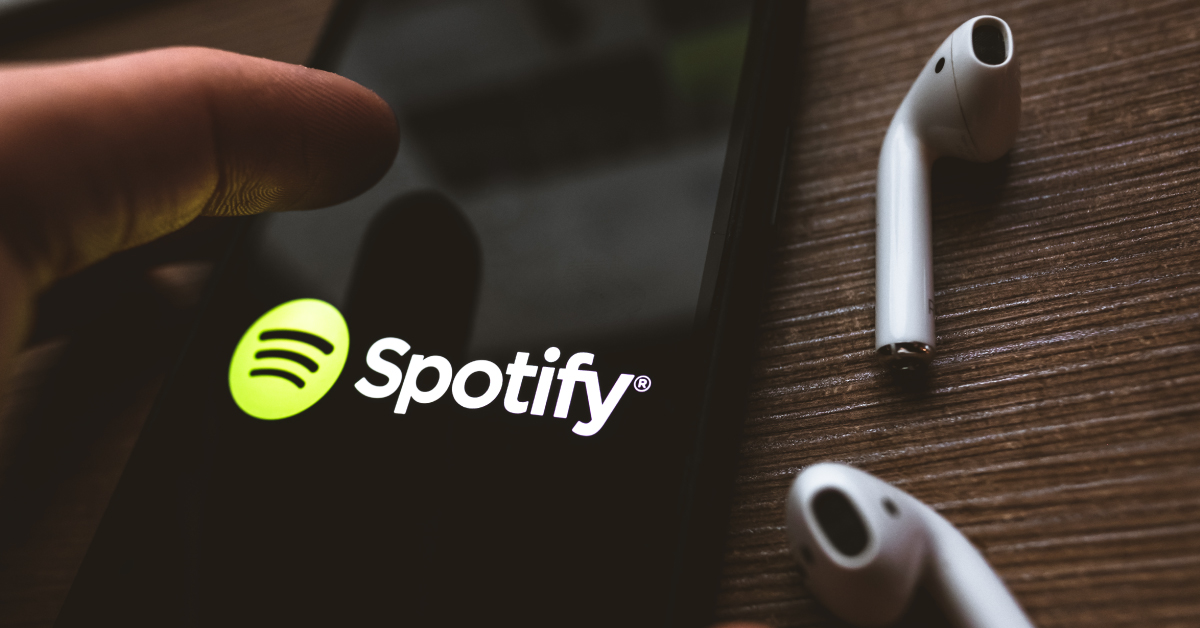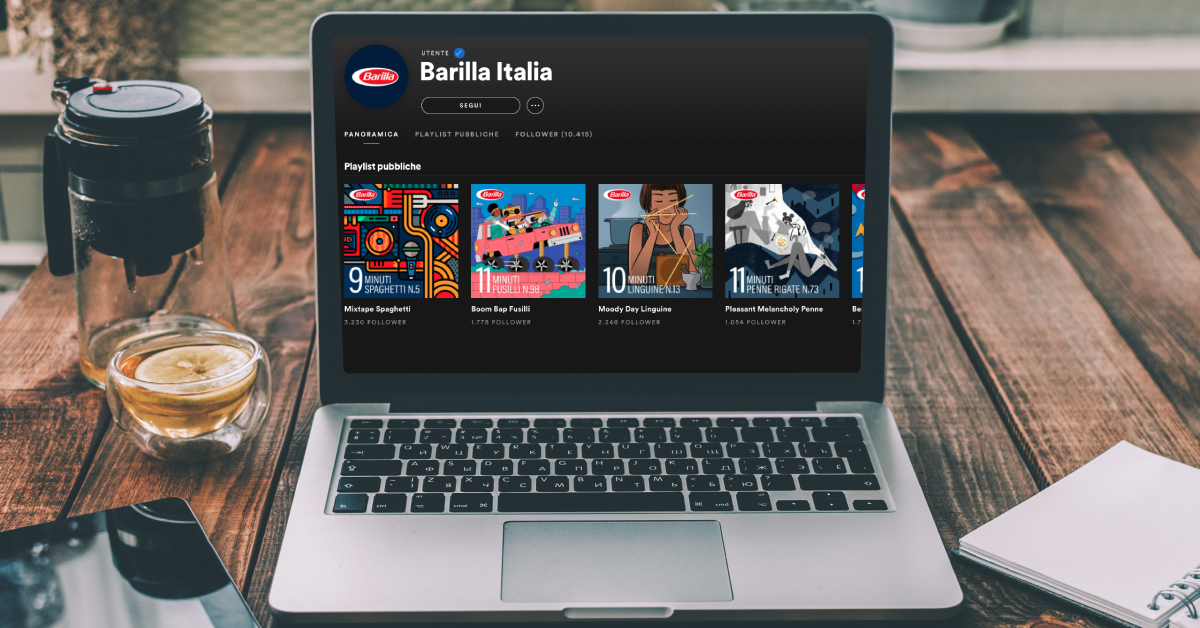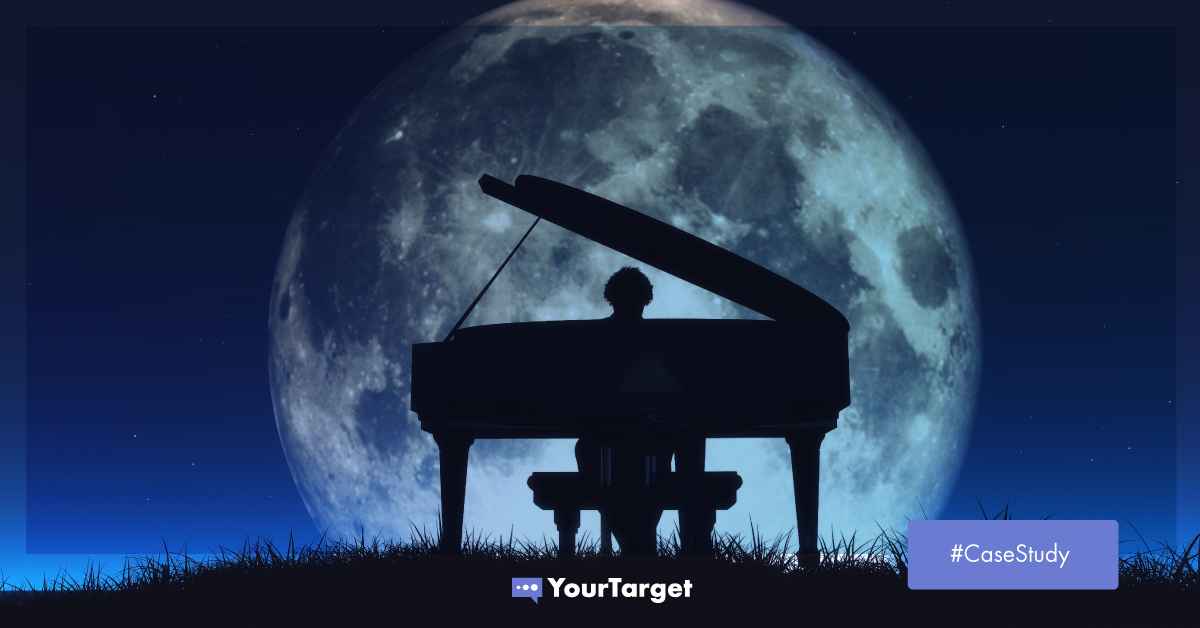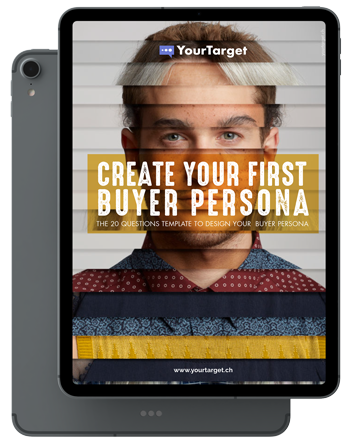“Alone we can do so little; together we can do so much.” – Helen Keller
The above quote succinctly sums up how teamwork can make a huge difference to what we are able to achieve. Although Helen Keller probably wasn’t talking about working together to pull off successful marketing campaigns, we think it applies just the same. When brands come together to develop great marketing campaigns, amazing things happen. That’s exactly what Barilla and Spotify did. Barilla’s co-branding campaign with Spotify was an instant success, not to mention it made cooking pasta just as fun as eating it! Okay, almost as fun.
In today’s article, we’re going to delve into the Barilla and Spotify collaboration to better understand how —by working together— they targeted customers spending more time at home due to the Coronavirus pandemic.
After reading this, we guarantee you’ll be having pasta for dinner!
Let’s jump right in.
What is Barilla?
If you’re Italian or you’ve ever been to an Italian person’s house, you’re probably familiar with the simple red and white Barilla label that adorns pasta packets and sugo (pasta sauce) jars everywhere.
An Italian multinational food company, Barilla is the largest pasta producer in the world. Its founder, Pietro Barilla, opened his first shop in 1877 in Parma, Emiglia Romana. Nowadays, the Barilla brand is a global superpower that owns several food businesses all over the world.
If you like pasta or biscuits (who doesn’t?), then you’ve probably eaten Barilla products, whether you realized it or not!
So how did they come to collaborate with a music streaming provider? Let’s find out.
Co-branding Explained
In the world of digital marketing, co-branding is a strategy that strives to bring together two or more businesses to combine their resources and create new products or innovative content.
Co-branding means that each brand involved must really know their audience, to understand how they interact with other brands and outline an opportunity for collaboration. It involves each brand promoting the content or product across multiple channels. Although each brand has its own business goals, expanding its target audience provides mutual benefits.
When done right, co-branding can bolster both businesses and help them to improve their reach, boost brand awareness, and increase their sales potential by capturing consumers of each brand.
Essentially, in a co-branding collaboration – both brands benefit by maximizing their exposure, sharing risk, and doubling their advertising budgets. Moreover, co-branding enhances company credibility when reputable brands are involved – which is great for business!
What did Barilla and Spotify Do?
You’d think cooking pasta was easy enough right? That’s not always the case. If you’re after that perfect al dente texture that restaurants seem to nail every time, you’ll need to know exactly how much time your Barilla pasta needs to come out perfectly cooked.
In these —to use that overused phrase— “unprecedented times”, people everywhere have found themselves spending much more time cooking at home.
For some, this was a great opportunity to improve their culinary or baking skills (who was part of the sourdough trend?). For others, having to cook was simply a hassle and they’d much rather be eating out at local restaurants.
Unfortunately, lockdowns have prevented businesses all over the world from operating normally. As a result, people have become much more accustomed to their kitchens. Barilla recognized that its customers’ lives had changed as a result of Covid-19, and resolved to adapt to their needs with a content marketing campaign directed at homebound consumers.

So, what did Barilla come up with?
People like to listen to music when they cook, that’s a fact. Whether you like to dance around the kitchen in-between adding ingredients, or you just find music relaxing – cooking with music beats cooking in silence, every time.
Barilla put two and two together and decided to collaborate with music streaming giant Spotify. What did they do? They created catchy playlists designed to last the same amount of time that Barilla pasta should be cooked for.
Publicis Italy came up with the local marketing campaign for Barilla. Dubbed “Playlist Timer”, the campaign includes eight Spotify playlists featuring popular music in Italy. Each playlist corresponds to a certain length of time different types of pasta should be cooked, ranging from 9-11 minutes.
The playlists feature various music genres, with popular songs to appeal to everyone’s taste. Each playlist corresponds to the most popular music genres in Italy (Barilla’s primary market), which are pop, hip hop, indie, and classics. The titles of the playlists are as follows:
- Mixtape Spaghetti
- Boom Bap Fusilli
- Pleasant Melancholy Penne
- Moody Day Linguine
- Best Song Penne
- Timeless Emotion Fusilli
- Simple Classics Linguine
- Top Hits Spaghetti
The idea is simple. Consumers put the pasta to boil (remembering to add salt!), hit play, and wait for the music to stop!
Spotify and Barilla Co-Branding Analysis
So, why did Barilla decide to partner with Spotify on the “Playlist Timer” campaign?
One thing’s for sure, Barilla really knows their target audience. As a business that’s been operating for almost 150 years, they should by now.
Barilla has always targeted their products towards a general audience. As the traditional concept of an Italian family has changed over time, Barilla has succeeded in targeting their marketing strategies towards Gen Z and Millenial couples and small families whose values align with environmental responsibility and sustainability. How? With strategic advertising campaigns that emphasize diversity, inclusion, and, of course, the enjoyment of food.
Spotify lays claim to a whopping 36% of the global streaming market, and 44% of the platform’s users listen daily. The major part of Spotify’s audience is made up of millennials (76%!), and the brand targets most of it marketing efforts towards this age group.
It’s clear that if you want to reach a millennial market, Spotify is a great way to do so. With young people all around the globe stuck at home due to closures of schools, universities, workplaces, and hospitality venues – Barilla saw an opportunity to reach out to homebound consumers with a platform they’re already familiar with.
There are three things we can consider when analyzing Barilla’s co-branding with Spotify.
- The shared purpose of both brands;
- The exclusive offering; and
- The reputation of the brands used.

1. Shared purpose: To reach a wider, younger audience
Barilla’s “Playlist Timer” campaign provides consumers with a branded experience facilitated by the world’s most popular music streaming service. Their purpose? To connect with members of their audience who use Spotify. Spotify’s overarching business goal is to attract and retain listeners—which its partnership with Barilla helped it to do.
We can say that the shared purpose behind this co-branding collaboration is to increase reach. For Barilla, the campaign will hopefully encourage better brand loyalty by providing customers with valuable content that they can use in their daily lives. In this case, while cooking pasta! For Spotify, the campaign could attract first time users and encourage sign-ups, or simply increase listening time for already existing members.
2. The exclusive offering: Innovative pasta-cooking music playlists!
Pasta is a staple of the Italian diet. If you’ve ever visited Italy, you’ll understand why. The way Italians cook it is so much better! The “Playlist Timer” campaign was a playful way to target audiences who are spending most of their time at home, and perhaps more time than usual in the kitchen.
Moreover, it’s an entertaining alternative to traditional kitchen timers or setting one on a mobile phone. No other pasta brand had done it, so Barilla saw their opportunity to reach out to consumers through a platform they were already most likely using while they cooked: Spotify. During the playlist, there’s a short note that reminds listeners to check the pasta. This also serves as a reminder as to who brought them the content.
Barilla isn’t the first brand to partner with Spotify. For instance, in 2019, Vans partnered with Spotify to create a weekly “Off the Wall Wednesday” playlist. KFC had a similar idea, where the brand’s marketing team collaborated with Spotify to create a playlist of songs that mentioned the brand, aptly named “Bucket Bangers.” By partnering with a platform that offers something people always want—music—brands can engage with audiences on a cultural level.
As consumers spend an increasing amount of time at home, it makes sense to target the platforms they use to relax or find entertainment.
3. The reputations of Spotify and Barilla
Both Spotify and Barilla are internationally recognized brands. By coming together to offer users innovative pasta-cooking playlists, both brands increase their visibility and boost engagement; Spotify on its music streaming platform and Barilla with their products.
At the end of the day, Barilla’s goal in collaborating with Spotify is to attract and retain our collective attention without resorting to outdated forms of direct advertising. Marketers have been experimenting with content ideas that stand the test of time and successfully engage a brand’s audience.
With its “Playlist Timer” campaign, Barilla effectively created something that’s both entertaining and useful, that can be regularly updated to remain relevant to users.
All this talk of pasta has got us feeling a little peckish. How about you?
Are you ready to start creating memorable marketing campaigns like this one?
First, you’ll need to know who your audience is! We’ve got just the thing.
Download our buyer persona template today and get to know your business audience.

